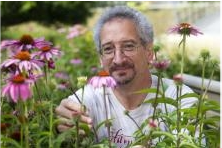
October 5, 2022
4-5pm
Hosted By Dr. Jim Coleman
There are over 330,000 described species of plants1, divided between the nonvascular (~32,000 species) and vascular (~308,000 species). For plant ecophysiologists, who study how plants physiologically adjust to their biotic and abiotic environments, these numbers mean that we do not have the human-power, time, or resources to study every species in the world. Instead, plant ecophysiologists have collated datasets to find proxies across species that are easy to measure, such as leaf structure or nutrient content that are then correlated with physiological parameters. This approach assumes that under similar circumstances, convergent evolution results in predictable patterns of plant responses, such as for gas exchange rates, growth, and structure-function relationships. For example, rates of photosynthesis correlate strongly with leaf N, and high rates with short leaf lifespans, and so on.
While strong patterns have emerged as part of leaf, root, and branch economics spectra, there are occasional outliers, which are especially interesting. How are these plants able to solve the dicta of natural selection in ways that most other plants do not? In this talk, I will present a few examples of plants that “stand out” in their field, and then show that in fact, they break no laws of chemistry or physics, but rather have found alternative and sometimes unanticipated ways to adapt to their environment. Such patterns often reinforce the rules, rather than break them, and are useful in expanding out conception of what plants can accomplish when faced with environmental selection pressures.
In this talk, I will illustrate these principles with three examples: (1) how a plant with unusually thick leaves is adapted to the light-limited environment of a forest understory where most species have thin leaves, (2) how two invasive plant species normally found in open fields encroach and eventually dominant forest understories, and finally, (3) how polyploidy increases the invasiveness of an old-field herbaceous perennial. Expanding our knowledge of plant adaptations could also lead to better understanding how species may respond to future climate change.
1 Christenhusz, M.J.M. and J.W. Byng. 2016. The number of known plant species in the world and its annual increase. Phytotaxa 261: 201-207.